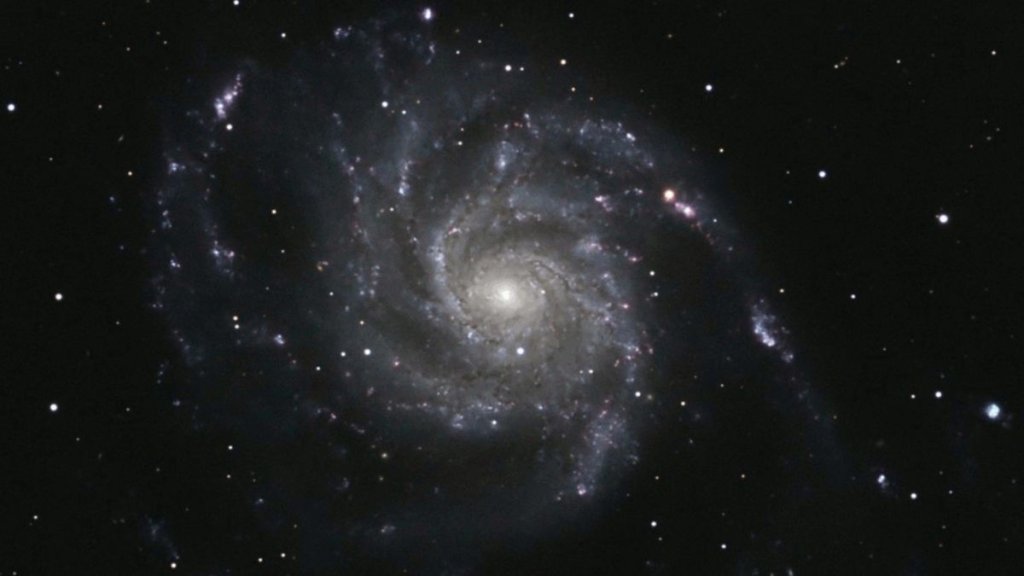
This new supernova is the closest to Earth in a decade. It’s visible in the night sky right now. (Image Credit: Space.com)

During the last few days, astronomers have been pointing their telescopes toward a familiar celestial object in our spring night sky for a look at a rare event: A new supernova — a star that has literally, and figuratively, “burst” upon the scene.
This new supernova has appeared in a galaxy — a star city — beyond our own. The galaxy is known as the Pinwheel Galaxy, (also designated as Messier 101, or M101) and is a large, loosely wound, spread-out, open-faced spiral galaxy which can be viewed through a small telescope with the proviso if the sky is dark enough. You would need a wide-field of view and a low-power eyepiece to positively see it.
Long-exposure photographs will bring out the half-dozen spiral arms of this galaxy. In some of these images taken in recent days, there appeared a new star, where none had ever appeared before.
But this is by no means a “new” star. It’s a dying one.
Related: What is a supernova?

Looking for a telescope to observe the Pinwheel Galaxy other awesome sights in the night sky? We recommend the Celestron Astro Fi 102 as the top pick in our best beginner’s telescope guide.
The Pinwheel Galaxy containing the new supernova is located near the border separating Ursa Major (the Big Bear) from Boötes the Herdsman. If you locate the Big Dipper, imagine a line extending from two of the stars in the handle, Alioth and Mizar. Continuing that line a similar distance beyond Mizar will place one in the general vicinity of M101.
Experienced amateur astronomers who are familiar with observing M101 might see the supernova visually as an out-of-place speck of light in one of the spiral arms.
Just note that this galaxy and supernova aren’t the easiest objects to spot in the sky. Part of the reason for its visibility being problematic is its apparent size: M101 is roughly one-third the apparent diameter of the moon; thus its overall brightness is “spread-out” to such a degree that the contrast between it and the background sky makes it somewhat difficult to perceive.

What we are seeing in this new supernova is a star that is — or was — many times larger and more massive than our own sun. If such a star were to replace the sun in the solar system, it might extend beyond the orbit of Mars. Stars produce their energy by fusing hydrogen into helium deep within their cores. When a star accumulates sufficient helium in its core, its energy output increases significantly, and it swells into a red giant or supergiant, like Betelgeuse in the constellation of Orion.
In such stars, the core produces successively heavier elements to balance the incessant crush of gravity. But once the core begins creating iron, a star’s days are numbered; the formation of elements heavier than iron consumes rather than produces energy. Eventually, since the core can no longer support the star’s immense weight, it collapses, triggering a cataclysmic supernova explosion. The resultant burst of light and energy is quite possibly equivalent to 10 billion normal stars!

That is what we’re seeing now, although actually, the star bursting apart did not occur this past Friday, for M101 is located at a distance of roughly 21 million light-years from Earth.
So the resultant light from this explosion has been traveling through space for 21 million years before it finally reached our planet last week.
Astronomers will certainly continue to monitor the supernova in the days to come, noting any fluctuations in brightness before it eventually fades away.
If you are hoping to catch a look at M101 or anything else in the night sky, our guides to the best telescopes and best binoculars are a great place to start.
And if you want to try your hand at taking your own pictures of celestial events like this new supernova, check out our guides on how to photograph the moon, as well as the best cameras for astrophotography and best lenses for astrophotography.
Editor’s Note: If you manage to take a photo of M101 and/or this new supernova and would like to share it with Space.com’s readers, send your photo(s), comments, and your name and location to spacephotos@space.com.





